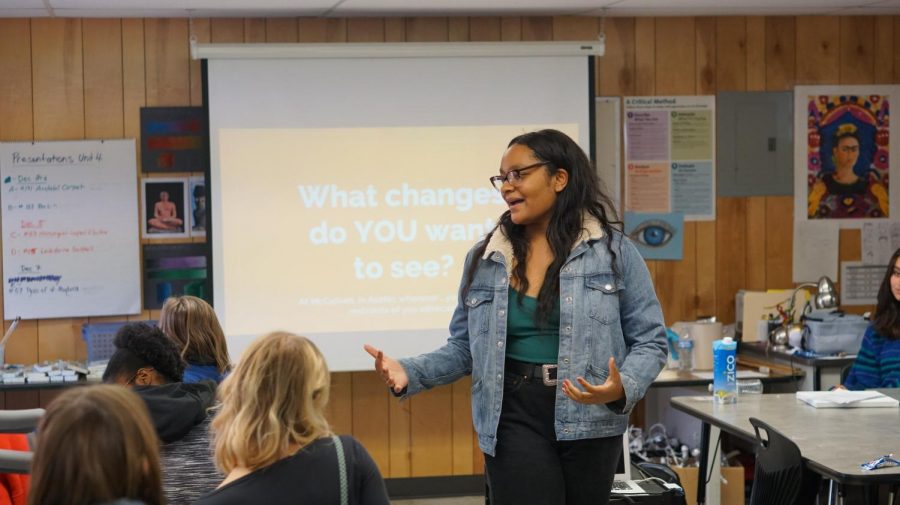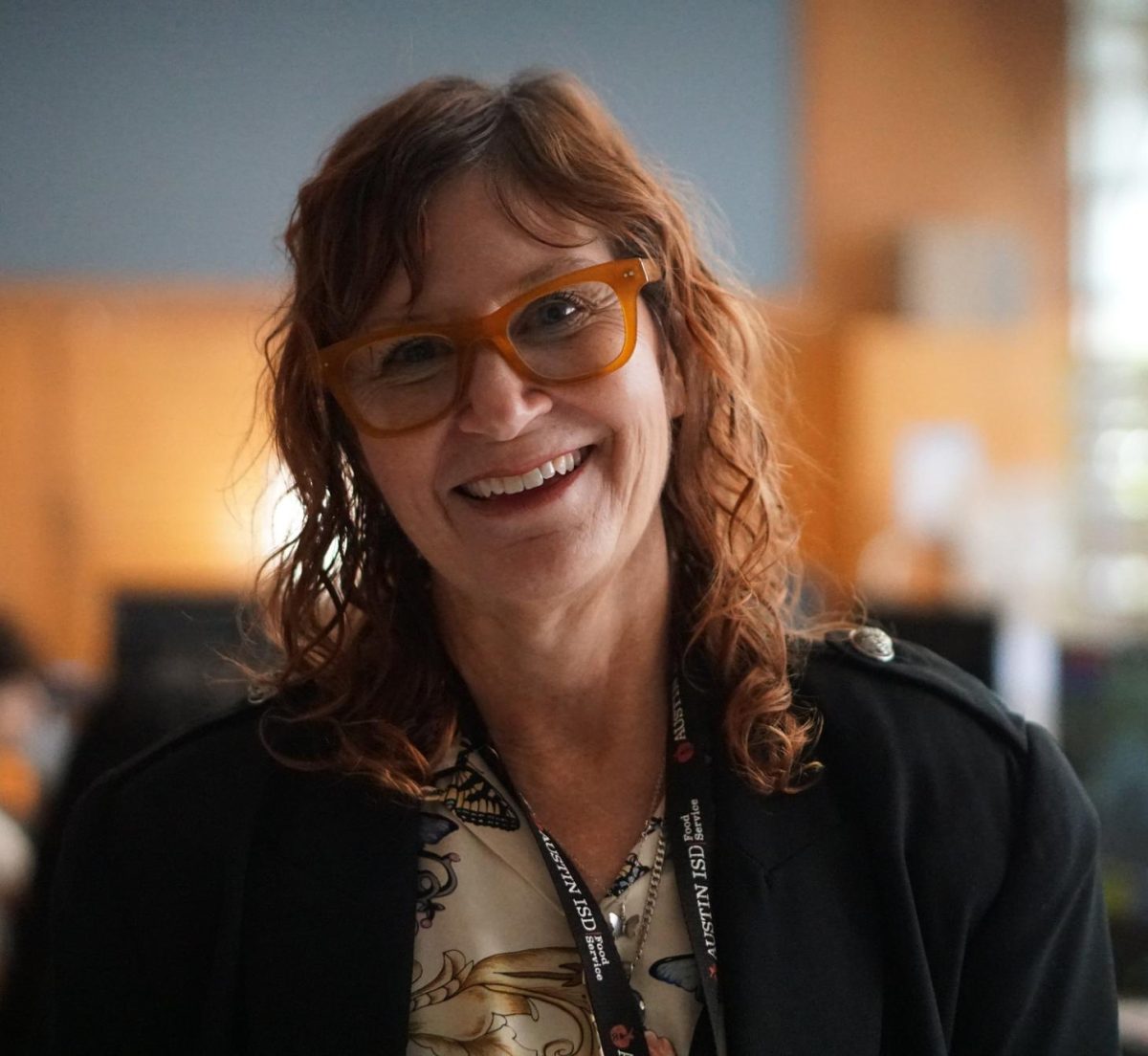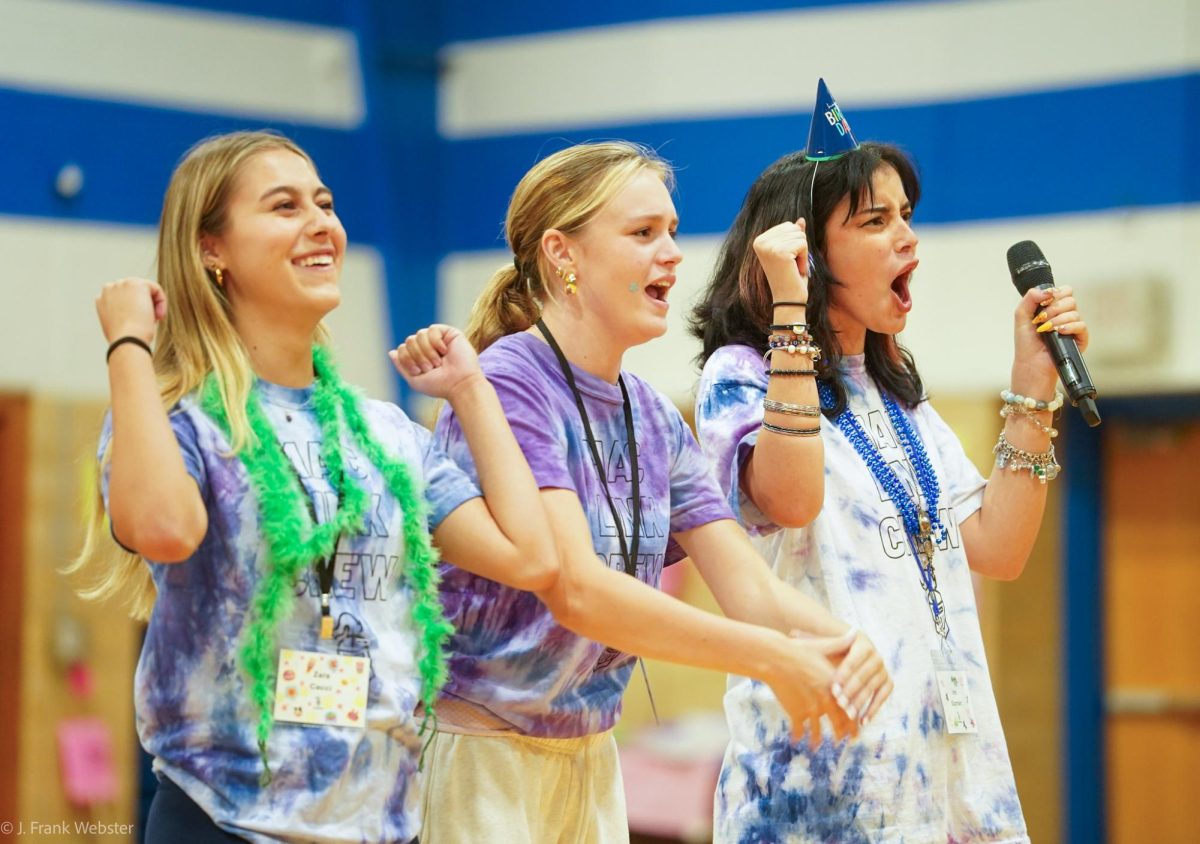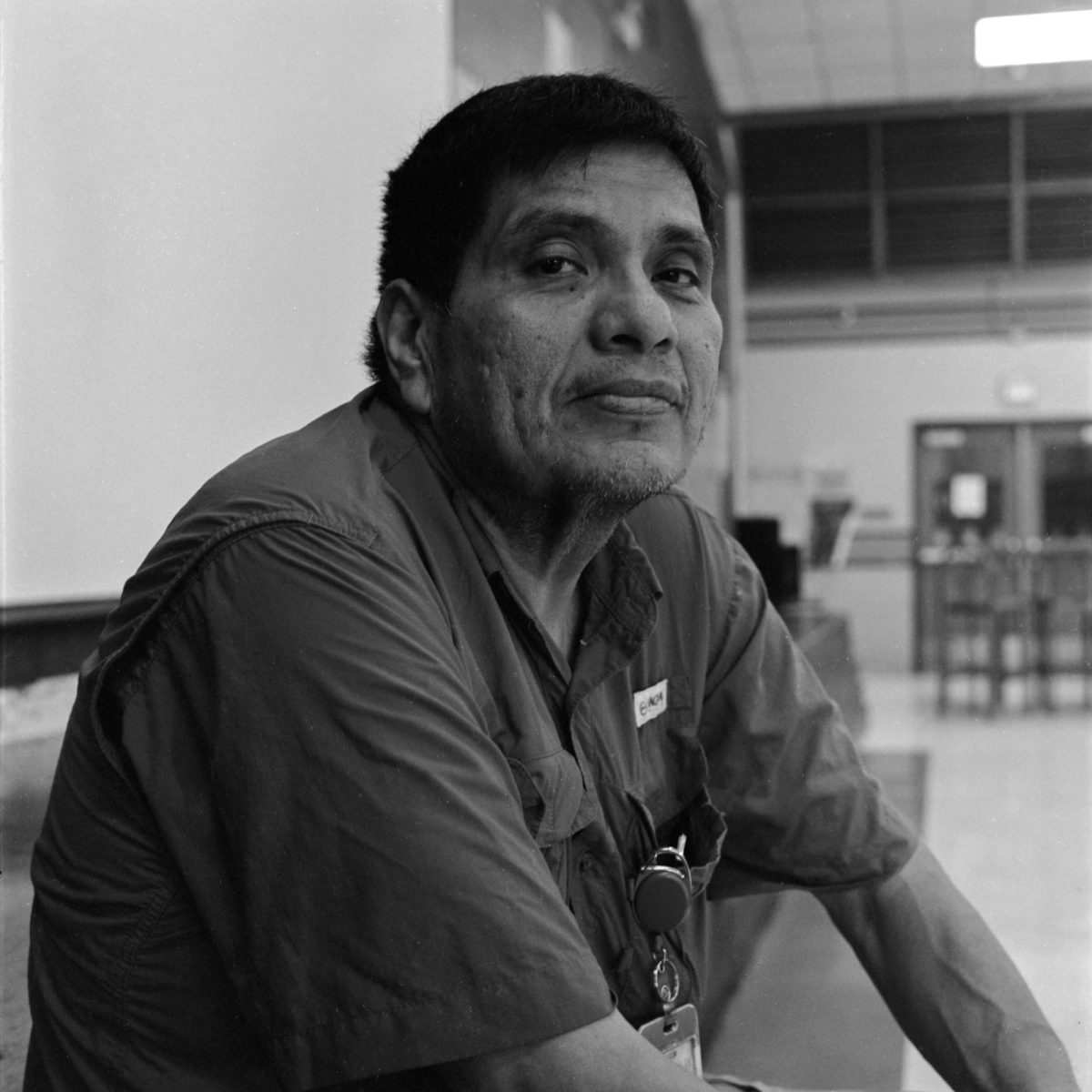Jordan Bibby first had the idea for the Students of Color Alliance when she was attending a meeting for the MacJustice Coalition, the club that organized the walkout when Donald Trump was inaugurated. After that protest, Bibby said she realized that the organizations at McCallum that work around issues of diversity and equality are often made up primarily of white students.
“I wanted to get more involved with the Justice Coalition, but there aren’t really any people of color involved, and they don’t really focus on those issues, and then I realized that there really wasn’t a platform at McCallum for the issues that I wanted to focus on,” Bibby said.
The first person that Bibby approached about the club was Kelsey Tasch, the club’s co-founder.
“Jordan came to me with the idea because we had done a little bit of activism work outside of school together,” said Tasch, who identifies as Latina. “Right off the bat, I was really excited. I was honestly surprised that McCallum didn’t already have a club like this. … When Jordan first asked me to help her start the club, I thought it was a great idea, but I did have some concerns,” Tasch said.
One of her main concerns was what kind of role she, as a white passing person, would have in the club.
“White passing basically means that I could be mistaken as a white person, so I’m not always faced with the same prejudice that other people of color experience,” Tasch said. “As a white passing person involved in the club, I wanted to be mindful of how my presence was going to affect the space” Tasch said.
After asking Tasch to be her co-founder, one of the first people Bibby asked to join the club was Connie Pierce.
“Jordan and I are good friends, so I was one of the first people she approached to join the club,” Pierce said. “I think this club is a great thing, because there’s so many clubs at McCallum, but until now, there hasn’t been one specifically for students of color and their allies. I also feel like McCallum has this reputation of being more socially accepting, and I’m not saying we aren’t, but of course there’s things that we can improve on, so it make all the more sense to have a Students of Color Alliance.”
The club is sponsored by Ana O’Keefe and Lucy Griswold, who share the founding students’ desire to create a safe environment for conversations about race and ethnicity.
“Jordan approached me wanting to know if I would host the club, and when I asked her what she wanted out of the club, she seemed like she had really thought about it and done her research, and I was honestly honored to host the club,“ O’Keefe said.
According to O’Keefe, her main role in the club will be providing her room as a safe space for people of color.
“From my experience, when students of color try to voice how race has affected them, it can make other students feel defensive, so I see this as an opportunity to create a safe space with a little bit of structure around those conversations,” she said. “ I think that my role is really just providing a space for both students of color and anyone who wants to come and support the cause and be an ally.”
Griswold, who teaches ethnic studies and world geography and co-sponsors the club, shares O’Keefe’s excitement about the new club.
“I think this is a wonderful and much-needed club on our campus,” Griswold said. “I think the goal of the organization is twofold. First, they want to create a safe space where students of color can totally let down their guard and feel like they can be their whole self. The second part of their stated goals is to take action, not just at our campus, but in our community as a whole. Really, I think the end goal is to create a more diverse and equitable society.”
Bibby hopes that Griswold will also be able to help the club achieve its goals of community involvement.
“I think she is super excited to help us reach out to different people, and she knows a lot about what’s going on in AISD that we may have to be concerned about,” she said.
Bibby makes it clear that this isn’t “one of those clubs where if you don’t show up to the first meeting, you can’t come. Whenever anyone wants to come, they can.”
That said, while both Tasch and Bibby don’t want the club to be exclusive, they do agree that it’s important for there to be some meetings that are open only to people of color.
“Jordan and I discussed this a lot, and we decided that most meetings will be open to everyone, but some will be closed to just people of color, so that way we can provide a truly safe space for students of color to discuss issues that are important to them,” Tasch said.
Bibby stresses that in addition to direct action, the club will also focus on education and awareness for allies.
“Another one of my main goals is to educate other people, because the club isn’t going to be just for people of color,” Bibby said. “I want to educate everyone who wants to learn about what sort of advocacy they can participate in outside of school, or even people who are just curious about the issues we will discuss in the club.”
One such issue that both Bibby and Tasch really wants to focus on within the Students of Color Alliance is examining minority participation in AP and honors classes, and what they call the “natural segregation” that happens within schools as a product of the divide between AP courses and regular courses.
“Because of the inequality in opportunities available to students of color, there’s this gap in the enrollment of minority students in AP and regulars classes, and that can start really early on in their education,” Tasch said.
A study by the U.S. Department of Education study shows that nationwide, there is a disparity between the number of white students and the number of black students enrolled in AP and honors courses. Although the issue is not specific to McCallum, a ProPublica study specific to AISD found that this gap occurs at McCallum. The study shows that at McCallum, “white students are 3.5 times as likely to be enrolled in at least one AP course than black students.”
The Students of Color Alliance is new, but Griswold has high hopes for the future of the club.
“McCallum is a school that often prides itself on its diversity and inclusion, and this is just another way that McCallum can live up to that reputation,” Griswold said. “Sometimes groups based around race and ethnicity can feel intimidating and exclusionary, but this is just about giving people of a particular background a space to explore that part of their identity, so it’s not something that people should feel threatened by, but something that gives a voice to a group on our campus that has too often gone unheard and unsolicited.”










Selena Dejesus-Leyva • Jan 15, 2019 at 10:51 am
WOW! There are no other words to explain this story. I love what Jordan Bibby is doing for our school. I actually have gone to one of the meetings and it was really nice how they had everything set up. You can talk to them about your problems and how you feel as a colored person.And considering that this school is diverse you really don’t hear from the color people in this school. And the part about colored people not being in a lot of AP classes is true because i myself take these classes and when i look up from my desk i only see 1 person out of 25 kids who is colored.